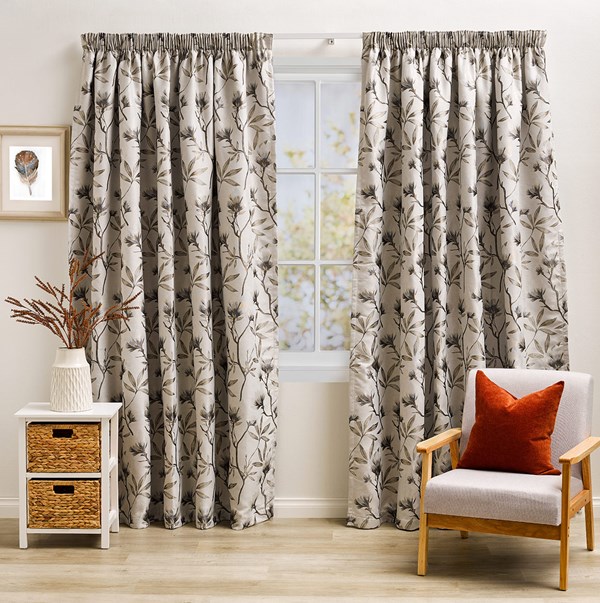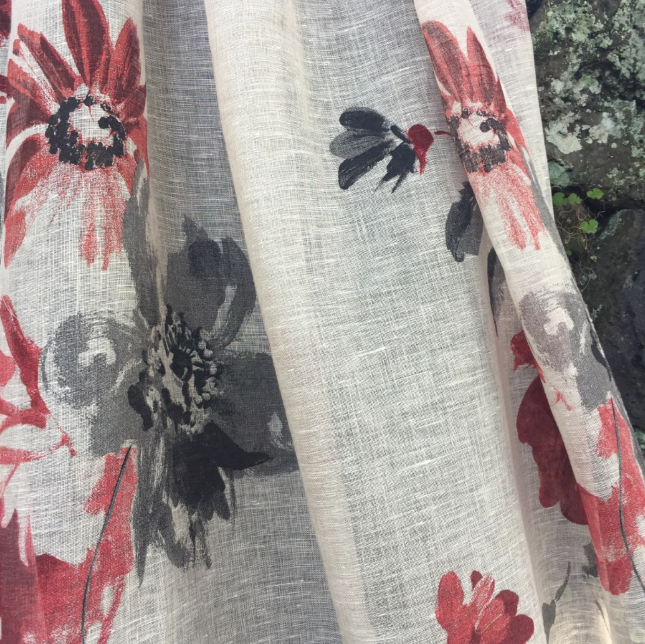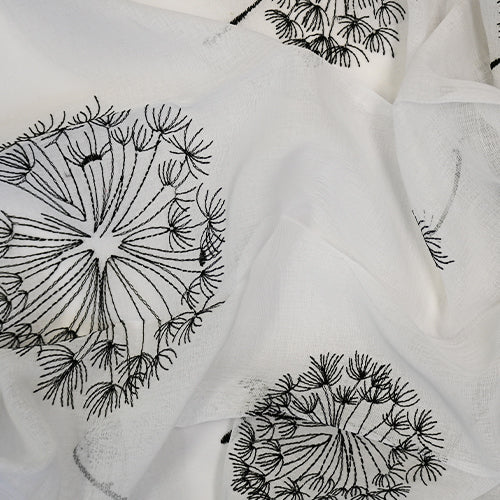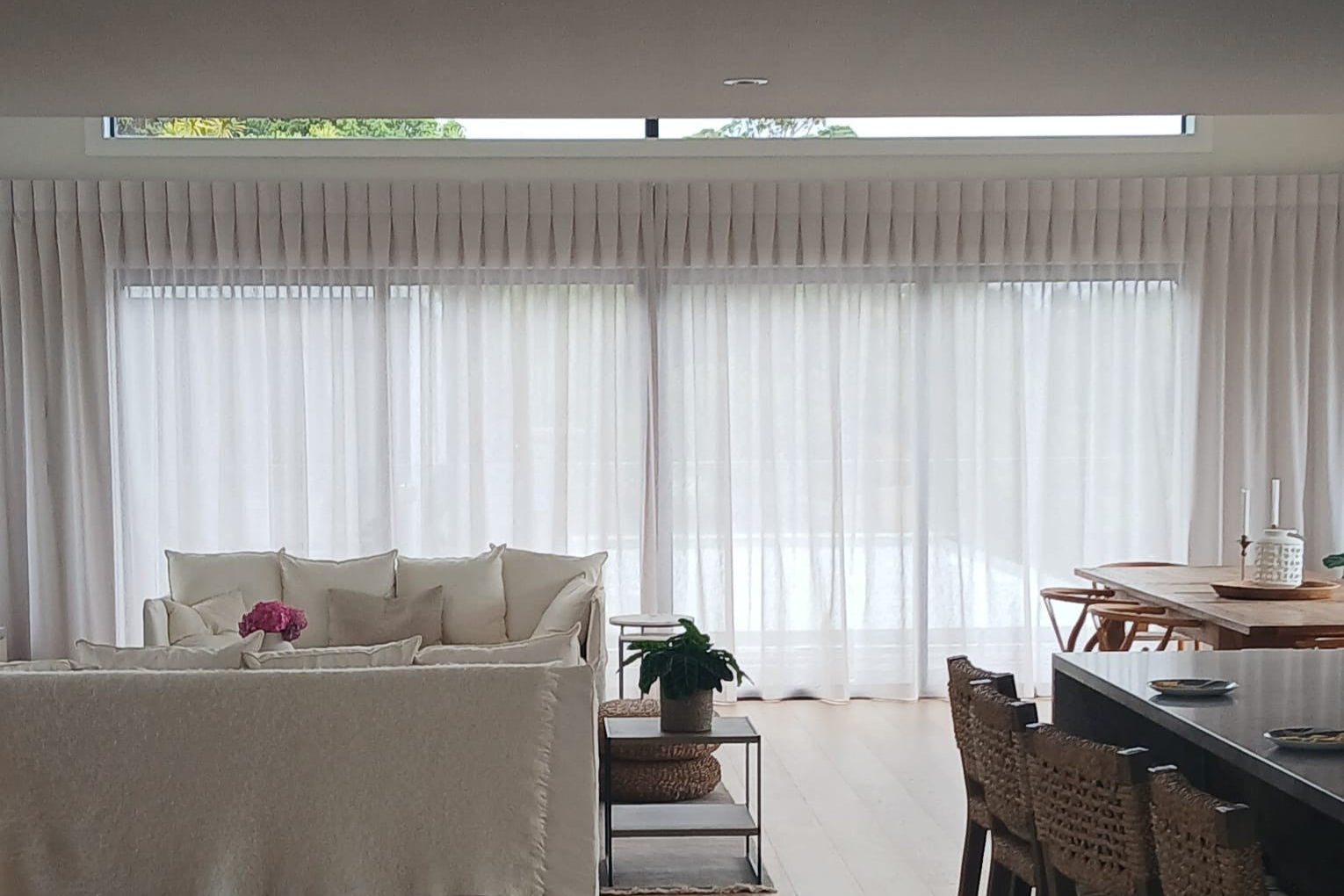Curtains can completely transform an interior space; adding personality, privacy, and comfort.
Curtain Header Styles
The heading style denotes how the fabric is sewn or pleated at the top of the curtain. This will impact the way the fabric drapes or hangs and therefore influence the look and feel of the room (whether the space takes on a traditional or more modern sensibility), as well as functional characteristics such as stack back (the amount of space a curtain will occupy when fully drawn open).
Listed Below Are The Most Popular Curtain Headings
Box Pleat (Inverted Pleat)
A tailored and elegant curtain heading style, the box pleat creates uniformed folds with deeply inverted pleats across the top. This flat heading is designed to sit neatly under a curtain rod or on a track. While most fabrics suit a box pleat, caution is advised with highly patterned designs, especially geometrics, as the pleats can disrupt the pattern match. When using standard width fabric, seams can be discreetly hidden within the pleats.

Wave Header (S-Fold)
A modern and contemporary choice, the wave heading style creates a clean, simple line. Structured buckram tape is secured to the back of the header, ensuring the fabric is evenly distributed in a symmetrical wave.
Wave headers are versatile, complementing most solid, patterned, and sheer fabrics. When using wide-width fabrics, a continuous, seamless line can be achieved across a window, which also improves manufacturing efficiency by reducing stitching. Synthetic fabrics are particularly well-suited to a wave heading style, as they maintain a stable formation over large windows, unlike some natural fibres that may fall more loosely.


Flat Panel
A flat panel curtain heading provides a minimalist and contemporary look, distinguished by its simple design and minimal fullness. This style is versatile, suitable for both solid and sheer fabrics, and particularly advantageous for patterned materials as it allows for an uninterrupted pattern repeat due to the absence of pleats.
A flat panel is an excellent option for sheer curtains when layered behind a fully lined curtain on a double track, as it sits neatly with minimal stack-back. Its relaxed aesthetic makes it especially fitting for high-quality linens, contributing to an air of casual sophistication.

Pencil Pleat (Gathered Header)
Pencil pleat curtains feature small, pencil-sized pleats that create a tightly gathered heading. This style is simple to achieve as the heading tape allows you to adjust the fabric's fullness by tightening the pull cords. For optimal results and even gathering, we advise against using very heavy or bulky fabrics with this heading style.


Single, Double and Triple Pinch Pleats
Pinch pleat curtains offer a timeless aesthetic. These pleats are formed by meticulously folding creases into stiff buckram tape, into which hooks are then inserted for hanging the curtain on a track or rod. Pinch pleat headers come in three variations, single, double, or trip, each distinguished by the number of folds at the top, influencing the fullness, stack back, and overall appearance of the curtain.
Single Pinch Pleat (New York Pleat)
The single pinch pleat heading creates a modern look. This style is an economical choice for fabric and works well in smaller spaces due to its neat stacking. It suits various fabric types, including sheers, solids, and patterns, and is especially effective for heavier materials.


Double Pinch Pleat (Dutch Pleat)
This versatile heading provides a uniform, consistent appearance with a tidy stack back and a more classic feel. Double pinch pleats are fabric-efficient, yet create a full, sophisticated, and elegant finish. Easy to install, this pleat's soft, structured look is ideal for both full-length curtains and those that end at dado level (approximately windowsill height).


Triple Pinch Pleat (French Pleat)
This is often considered elegant, classic heading creates a lavish, full curtain, ideal for a large room where its beauty can be fully appreciated. While it works beautifully with luxurious fabrics, it does require more material than single or double pinch pleats.


Illustration images courtesy of James Dunlop Textiles



